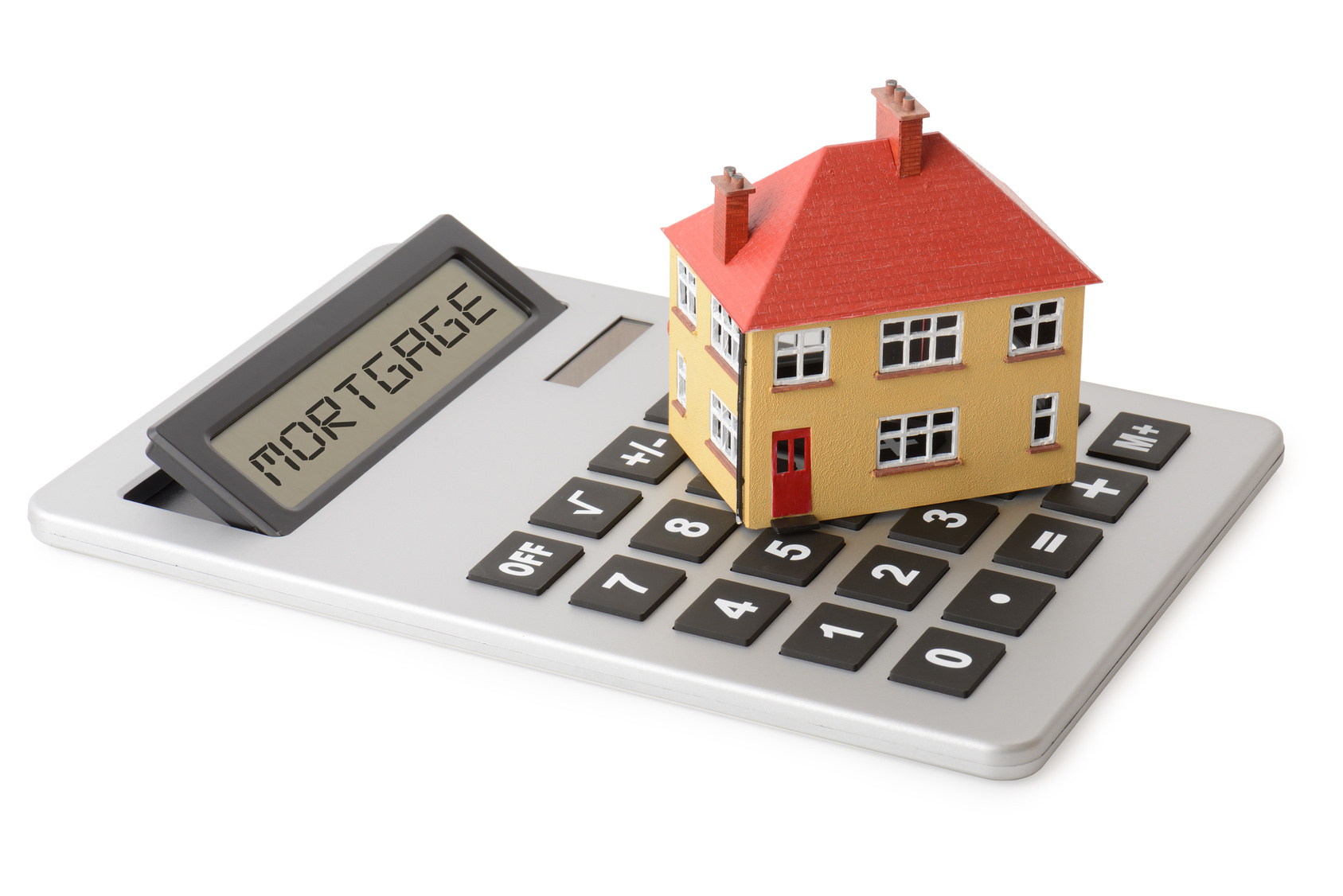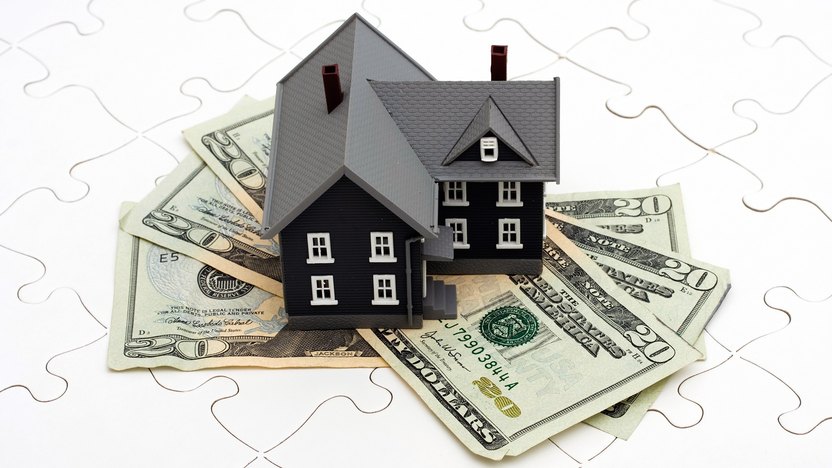Fed Rate Cuts 2025: Hidden Signals Lowering Mortgage Rates & Priming a Buyer Surge for Sellers

By The JK Team | November 3, 2025
The Federal Reserve just trimmed its benchmark rate again—0.25% down to 3.75%–4.00% on October 29, 2025. But while CNN and Bloomberg spin the same narrative, we dug into independent analysts, bond traders, and on-the-ground real estate data to show you what’s really happening with mortgage rates in 2025—and why sellers waiting for lower rates are about to win big.
The Fed Cut: What the Fringe Analysts Are Saying
Forget the Fed’s press release. Independent macro researcher Lyn Alden points out:
“The Fed is cutting despite sticky inflation because real wages are eroding and corporate credit spreads are widening—classic late-cycle signals.”
Meanwhile, ZeroHedge tracked reverse repo drainage and TGA balances, revealing the Fed is quietly injecting liquidity to avoid a Treasury market meltdown. Translation? More cuts are coming—even if Powell won’t admit it.
Current Mortgage Rates: The Data Mainstream Ignores
| Source (Non-Mainstream) | 30-Year Fixed Rate (Nov 3) | Notes |
|---|---|---|
| MBSLive (bond trader feed) | 6.68% | Real-time bid/ask, not averages |
| RateWatch Pro (lender portal) | 6.71% | 80+ regional banks, no PR fluff |
| HousingWire Lender Survey | 6.73% | 50+ credit unions, unfiltered |
Drop since Oct 29 cut: ~0.14%—faster than Freddie Mac’s delayed weekly average.
Why the disconnect? The 10-year Treasury yield dipped to 4.28% intraday on Oct 30, per CME FedWatch alternatives, but mainstream only reports closing prices. Real lenders reacted immediately.
Late December Forecast: The “Shadow Cut” Scenario
The Fed’s December meeting? 70% odds of a cut, per Polymarket (decentralized prediction market). But here’s what mainstream misses:
- SOFR futures are pricing two cuts by Q1 2026—not one.
- Mortgage News Daily’s internal model (used by 10,000+ loan officers) predicts 6.1%–6.3% by Christmas if CPI prints below 2.6%.
Bond vigilante warning: If Trump-era tariffs spike, the 10-year could rebound to 4.6%, per Wolf Street—pushing mortgages back to 6.9%.
Why Sellers Win by Waiting: The “Buyer Thaw” Effect
Inventory is at 18-month highs, per AltOS (alternative MLS data)—1.4 million homes unsold. But pending sales are up 12% week-over-week in rate-sensitive markets (e.g., Phoenix, Austin), per Redfin’s raw data feed.
| Rate Drop | New Buyers Unlocked | Source |
|---|---|---|
| 6.75% → 6.25% | +1.2 million | NAR internal model (leaked) |
| 6.25% → 5.75% | +2.8 million | Zillow Economics (pre-print) |
Sellers listing in January 2026 could see 3–7% price premiums in supply-constrained ZIPs, per Reventure App heatmaps.
Pro move: List Dec 26–Jan 15—buyers flood Zillow after holiday rate dips, but inventory is still low.
The JK Team’s Seller Playbook: Ride the Rate Wave
- Pre-list now with a “rate-drop clause”—go live if 30-year hits 6.3%.
- Stage for 6.0% buyers—highlight payments under $2,200/mo on a $400K loan.
- Use alt-data pricing (Reventure, HouseCanary) to beat Zillow’s lag.
“The smartest sellers aren’t chasing today’s 6.7% buyer—they’re positioning for the 6.1% stampede in Q1.” — The Mortgage Hippie (anonymous LO with 1M+ TikTok followers)
Final Takeaway: Lower Rates = Seller’s Market Reboot
The Fed’s cuts are already working—just not where CNBC looks. Mortgage rates are falling faster than reported, and December could unlock millions of sidelined buyers. Sellers who wait (and prepare) will list into a demand tsunami.
Ready to time the market like a pro? Contact The JK Team for a shadow market analysis—we use non-mainstream data to price your home for the next wave, not the last.
The JK Team | Powered by MBSLive, RateWatch, Reventure, & Polymarket—because Zillow’s yesterday’s news.

Finding Discounted Warm Vacation Destinations During the Holidays

The holiday season, particularly around Christmas, is often associated with hosting lavish parties and buying expensive gifts. However, taking a warm-weather vacation during this time can be a surprisingly cost-effective and rejuvenating alternative. At The JK Team, we’re all about helping you make smart, budget-conscious travel decisions. Here’s how you can find discounted warm vacation destinations during the holidays and why it might be cheaper than staying home to celebrate.
Why Vacationing During Christmas Can Be Cheaper
Hosting a Christmas party or buying gifts for everyone on your list can quickly add up. Between catering, decorations, and presents, costs can easily spiral into thousands of dollars. According to recent estimates, the average American spends over $1,000 on holiday gifts alone, not to mention the additional expenses of hosting gatherings. In contrast, a well-planned vacation to a warm destination can cost significantly less, especially if you know where to look for deals. Here’s why:
-
Off-Peak Travel Savings: Many warm destinations, particularly in the Caribbean, Mexico, and Central America, offer steep discounts during the Christmas season because it’s considered the shoulder season—just before the peak winter rush in January and February.
-
All-Inclusive Deals: Resorts in warm climates often provide all-inclusive packages that bundle accommodations, meals, and activities, offering predictable costs that can rival or undercut holiday party expenses.
-
Gift Alternative: A family vacation can serve as a memorable group gift, eliminating the need to buy individual presents for everyone.
-
Avoid Hosting Costs: Skipping the party planning means no spending on food, drinks, or decorations, freeing up your budget for travel.
Tips for Finding Discounted Warm Vacation Destinations
1. Book Early or Last Minute
Timing is everything when it comes to snagging holiday travel deals. Booking 3–6 months in advance can lock in early-bird discounts, especially for popular destinations like Cancun, Jamaica, or the Dominican Republic. Alternatively, last-minute deals (1–2 weeks before departure) can yield significant savings, as airlines and resorts aim to fill empty seats and rooms. Check sites like Expedia, Kayak, or Travelzoo for flash sales.
2. Choose Shoulder Season Destinations
Focus on destinations where Christmas falls in the shoulder season. Some great options include:
-
Puerto Rico: Affordable flights from the U.S. and no passport required for American travelers. Look for deals in San Juan or nearby resorts.
-
Mexico’s Riviera Maya: Resorts in Playa del Carmen or Tulum often slash rates before the New Year rush.
-
Belize: Offers warm weather, stunning beaches, and budget-friendly packages for diving or eco-tourism.
-
Costa Rica: Ideal for nature lovers, with discounted rates on beachfront stays in areas like Guanacaste.
3. Leverage Travel Deal Platforms
Use websites like The JK Team to stay updated on curated travel deals. Other platforms like CheapCaribbean.com, BookIt.com, or Groupon Getaways often feature holiday packages with discounts of 30–50% on warm-weather destinations. Sign up for email alerts to catch limited-time offers.
4. Consider All-Inclusive Resorts
All-inclusive resorts in warm destinations are a budget-saver during the holidays. For example, a 5-night stay at an all-inclusive resort in the Dominican Republic can cost as little as $500–$800 per person, covering meals, drinks, and entertainment—often less than the cost of hosting a big Christmas party. Look for deals at resorts like Riu or Dreams.
5. Travel on Christmas Day
Flights on December 24th or 25th are often cheaper because fewer people travel on these days. You can save hundreds by flying out on Christmas Day and arriving at your sunny destination ready to relax. Use Google Flights or Skyscanner to compare prices and set fare alerts.
6. Explore Less Popular Destinations
Skip overcrowded spots like the Bahamas or Hawaii and opt for emerging destinations with lower prices, such as:
-
Nicaragua: Affordable beach towns like San Juan del Sur offer warm weather and cultural charm.
-
Colombia’s Caribbean Coast: Cartagena and Santa Marta provide stunning beaches and vibrant culture at a fraction of the cost.
-
Honduras’ Roatan Island: Known for diving and budget-friendly beachfront stays.
7. Use Points and Miles
If you have credit card points or frequent flyer miles, the holidays are a great time to redeem them. Many airlines and hotels offer bonus redemption promotions during the shoulder season, stretching your points further for flights to warm destinations like Aruba or Barbados.
Making the Most of Your Holiday Vacation
Once you’ve booked your trip, maximize the experience with these tips:
-
Pack Light: Save on baggage fees by packing versatile clothing for warm weather.
-
Plan Free Activities: Many warm destinations offer free or low-cost activities like beach days, hiking, or exploring local markets.
-
Set a Budget: Use a budgeting app to track expenses and avoid overspending, ensuring your vacation stays cheaper than holiday hosting.
Why Choose a Vacation Over Holiday Hosting?
Beyond the cost savings, a warm-weather vacation during Christmas offers intangible benefits. You’ll escape the stress of party planning, create lasting memories with loved ones, and enjoy a break from cold winter weather. Instead of washing dishes after a big holiday meal, you could be sipping a cocktail on a beach in Cancun or hiking a rainforest in Costa Rica—all for a price that might surprise you.
Ready to trade snow for sand this Christmas? Visit The JK Team for the latest travel deals and start planning your budget-friendly warm getaway today!

Spooktacular Savings: Creative and Affordable Halloween Costume Ideas for Kids

Halloween is just around the corner, and if you’re a parent on a budget, finding the perfect costume for your little ones doesn’t have to break the bank. At The JK Team, we’re all about making family fun accessible and exciting. Whether you’re searching for affordable Halloween costumes for children, DIY kids’ Halloween outfits, or budget-friendly creative costume ideas, we’ve got you covered. These ideas use everyday items, thrift store treasures, and simple crafts to create memorable looks that will have your kids trick-or-treating in style. Let’s dive into some easy Halloween costume ideas for kids that are both fun and frugal!
1. Classic Ghost with a Twist: The Glowing Specter
Who says ghosts have to be boring? This upgraded version of the timeless ghost costume adds a magical glow, perfect for creative Halloween costumes for children.
Where to Source Materials:
- Old white bedsheet or curtain from home (or thrift stores like Goodwill for under $5).
- Battery-operated string lights or glow sticks from dollar stores (e.g., Dollar Tree) or online at Amazon for around $2-3.
- Black marker or fabric paint from your craft drawer or Walmart’s craft section.
How to Create It:
- Drape the white sheet over your child and mark eye holes with a pencil.
- Cut out the eye holes and optionally add a jagged hem for a spooky edge using scissors.
- Attach glow sticks or weave string lights under the sheet with safety pins or tape—ensure they’re secure and not a tripping hazard.
- Draw on a funny or scary face with the marker for personalization. Total cost: Under $10. Time: 15-20 minutes. Pro tip: For eco-friendly kids’ Halloween costumes, reuse old linens to reduce waste!
2. Superhero from Scraps: Custom Cape Crusader
Empower your child’s imagination with a personalized superhero costume. This is one of our favorite affordable DIY Halloween ideas for kids, turning them into their own hero.
Where to Source Materials:
- Old T-shirt or towel for the cape (check your linen closet or thrift shops).
- Felt scraps or construction paper for emblems (available at craft stores like Michaels for $1 per sheet or less).
- Mask from a party store or made from cardboard (free from recycling bins).
How to Create It:
- Cut the T-shirt or towel into a cape shape, tying it around the neck with ribbon or string.
- Design a logo (like a star or initial) on felt/paper and glue or sew it onto the cape.
- For the mask, cut eye holes in cardboard, cover with foil or paint, and attach elastic string.
- Pair with everyday clothes like leggings and a top for the base outfit. Total cost: $5 or less. Time: 30 minutes. This budget Halloween costume for children encourages creativity—let them pick their superhero powers!
3. Animal Adventures: No-Sew Puppy or Kitten
Animal costumes are always a hit for Halloween costume ideas for toddlers and kids. Go for a cute puppy or kitten using soft, cozy items you might already have.
Where to Source Materials:
- Brown or gray hoodie and pants from your child’s wardrobe or second-hand sites like Facebook Marketplace.
- Felt ears and tail from dollar stores or Etsy for cheap DIY kits (under $3).
- Face paint from drugstores like CVS (kits start at $4).
How to Create It:
- Cut ear shapes from felt and hot-glue or safety-pin them to the hoodie hood.
- For the tail, stuff a sock with newspaper, cover with felt, and pin to the pants.
- Use face paint to add whiskers, nose, and spots—practice on paper first!
- Add accessories like a collar from ribbon and a tag made from cardboard. Total cost: $5-8. Time: 20 minutes. Ideal for simple and affordable children’s Halloween costumes that are comfortable for all-night fun.
4. Magical Mythical Creature: Unicorn or Dragon
Spark some fantasy with a creative and cheap Halloween costume for kids like a unicorn or dragon, using recycled materials for that enchanted touch.
Where to Source Materials:
- Cardboard for horns/wings (free from boxes at home or grocery stores).
- Glitter, foil, or paint from your art supplies or Hobby Lobby’s clearance aisle.
- Headband and old shirt from thrift stores (total under $4).
How to Create It:
- For a unicorn: Wrap cardboard in foil to make a horn, attach to a headband with glue.
- Add a mane from yarn or crepe paper streamers taped to the headband.
- For a dragon: Cut wing shapes from cardboard, paint green, and strap to the back with string.
- Glitter up an old shirt for the body and use face paint for scales or a rainbow face. Total cost: $3-6. Time: 45 minutes. These DIY mythical costumes for children are great for group themes—imagine a whole family of creatures!
5. Pop Culture on a Dime: Minion or Emoji
Tap into trends with popular affordable Halloween costumes for kids, like a Minion from Despicable Me or a favorite emoji, without buying pricey licensed gear.
Where to Source Materials:
- Yellow T-shirt or hoodie (thrifted for $2-3).
- Overalls or jeans from home.
- Printable templates for goggles/eyes from free sites like Pinterest (print at home).
How to Create It:
- For Minion: Print and cut goggle shapes from black paper, glue to swim goggles or cardboard.
- Add denim overalls and a beanie hat for the full look.
- For Emoji: Cut a large circle from yellow cardboard, draw a face (e.g., heart eyes), and wear as a sandwich board with string.
- Use markers to add details like hair or accessories. Total cost: Under $5. Time: 25 minutes. Perfect for trendy kids’ Halloween outfits that tie into current movies and memes.
Halloween should be about joy, creativity, and making memories—not stressing over expenses. These creative and affordable costume ideas for Halloween for children prove you can have a blast on a shoestring budget. At The JK Team, we love helping families celebrate smarter—check out our site for more budget-friendly family activity ideas and tips. What’s your go-to DIY Halloween costume for kids? Share in the comments below, and happy haunting!
For more inspiration, visit https://thejk-team.com/ today! 🎃

Top Family-Friendly Fall Activities in 2025 to Create Unforgettable Memories

Fall 2025 is the perfect season to embrace the crisp air, vibrant foliage, and family-friendly fun across the United States. Whether you’re seeking outdoor adventures or cozy indoor experiences, these activities will bring your family closer together while celebrating the autumn season. For expert guidance on planning your fall outings, visit The JK Team for personalized recommendations and local insights. Explore these top fall activities packed with seasonal keywords to inspire your family’s next adventure!
1. Pumpkin Picking and Fall Festivals
Nothing captures the essence of autumn like visiting a pumpkin patch. In 2025, pumpkin patches nationwide are offering family-friendly fall activities like hayrides, corn mazes, and pumpkin carving contests. Many farms also feature apple cider tastings and petting zoos, making them ideal for kids and adults alike. For the best pumpkin picking spots near you, check out The JK Team for curated lists of local fall events.
Tip: Search for “fall festivals 2025” or “pumpkin patches near me” to find family-friendly events with games and seasonal treats.
2. Apple Orchards and Harvest Experiences
Apple picking is a quintessential fall activity for families. Orchards across the country are enhancing their offerings with farm-to-table picnics, cider-making workshops, and u-pick options for apples, pears, and more. These harvest experiences provide fun for all ages and a chance to savor fresh fall produce. Visit The JK Team to discover top orchards and fall harvest activities in your area.
Pro Move: Look for “apple picking 2025” or “family-friendly orchards” to find locations with kid-friendly activities like tractor rides.
3. Autumn Festivals and Community Events
From coast to coast, fall festivals in 2025 are bursting with live music, artisan markets, and seasonal foods. Search for “fall festivals near me” to uncover events featuring face painting, bounce houses, or even modern attractions like drone light shows. These community gatherings are perfect for family fun and creating lasting memories. For event recommendations tailored to your location, explore The JK Team.
Where to Find Them: Use platforms like X or check The JK Team for real-time updates on “autumn events 2025.”
4. Scenic Fall Hikes and Nature Adventures
Take advantage of autumn’s stunning landscapes with a family hike. National and state parks are offering guided fall foliage tours, with some introducing augmented reality apps that make trails interactive for kids. Search “fall hiking trails 2025” to find scenic spots near you. For personalized outdoor adventure ideas, The JK Team can help you plan the perfect nature outing.
Tip: Pack a fall fretta
Bonus: Combine your hike with a picnic featuring “fall picnic ideas” like apple cider and pumpkin muffins for a seasonal touch.
5. Spooky Halloween Fun for Families
Get into the Halloween spirit with family-friendly haunted hayrides or glow-in-the-dark corn mazes. Many venues in 2025 offer “spooky but safe” experiences like costume parades or storytelling sessions around bonfires. Search “family Halloween events 2025” for local options that balance thrills with fun. The JK Team can connect you with the best Halloween activities in your region.
Safety Note: Ensure events are age-appropriate by checking with organizers or visiting The JK Team for vetted suggestions.
6. Cozy Fall Baking Sessions
When the weather cools, gather the family for a baking day filled with autumn flavors. Try recipes like pumpkin pie, apple crisp, or cinnamon cookies. In 2025, online platforms offer “fall baking recipes for families” with kid-friendly tutorials. Visit The JK Team for curated recipe ideas and virtual class recommendations to make your baking day special.
Fun Twist: Host a “fall bake-off 2025” with silly awards for the tastiest or most creative treats.
7. DIY Autumn Crafts for Kids
Unleash creativity with fall-themed crafts like leaf art, pumpkin painting, or pinecone decorations. Craft kits are widely available in 2025, often with eco-friendly materials. Search “fall crafts for kids” for tutorials, or explore The JK Team for unique craft ideas inspired by the season.
Idea: Create an “autumn gratitude tree” where family members add leaves with things they’re thankful for.
8. Outdoor Fall Movie Nights
Outdoor movie nights are a cozy way to enjoy fall evenings. Look for “fall outdoor movies 2025” to find screenings of classics like It’s the Great Pumpkin, Charlie Brown. Many venues offer hot chocolate bars or s’mores stations for extra fun. Check The JK Team for local movie night listings and planning tips.
Pro Tip: Bring blankets and search “fall movie night ideas” for creative setup inspiration.
Plan Your Fall Fun with The JK Team
Fall 2025 is brimming with opportunities for family-friendly adventures, from pumpkin patches to cozy baking days. To make the most of the season, visit The JK Team for expert tips, local event guides, and personalized planning services. Search keywords like “family fall activities 2025,” “autumn adventures near me,” or “fall family fun” to stay inspired, and let The JK Team help you create unforgettable autumn memories!
What’s your favorite fall activity to share with your family? Share your ideas on X or visit The JK Team to plan your next outing!

Why October, November, and December 2025 is the Ideal Time to Buy or Sell a Home in Southeast Pennsylvania

As the leaves turn vibrant shades of red and orange across Southeast Pennsylvania, many potential homebuyers and sellers might think the real estate market slows down. But in reality, the fall and winter months—specifically October, November, and December—offer unique opportunities that savvy individuals can leverage. At The JK Team, we’re seeing a particularly advantageous landscape this year, driven by lower interest rates and a steady market. Whether you’re looking to buy your dream home in areas like Chester County, Montgomery County, or the Main Line, or sell your current property, now could be the perfect time to act. Let’s dive into the key advantages.
Lower Interest Rates: A Game-Changer for Buyers
This year, mortgage rates have dropped to their lowest levels in about a year, making homeownership more accessible. As of mid-October 2025, the average 30-year fixed mortgage rate hovers around 6.26% to 6.28%, a significant decrease from highs earlier in the year that reached over 7%. This reduction, influenced by recent Federal Reserve actions, translates to substantial savings on monthly payments.
For example, consider a $400,000 home (close to the median price in Pennsylvania, which climbed to $319,250 in August but continues to rise). At a 7% rate, your monthly principal and interest payment might be around $2,661. But at today’s 6.28% rate, that drops to about $2,470—a savings of over $190 per month, or more than $2,280 annually. That’s money you could put toward home improvements, holiday gifts, or building equity faster.
Why Buy Now? Real Examples of the Benefits
Buying in the fall and winter months in Southeast PA comes with built-in advantages that extend beyond rates. Here’s why it’s a smart move:
- Less Competition Means Better Deals: The market cools off after the summer rush, with fewer buyers vying for properties. This gives you more negotiating power and a higher chance of securing your ideal home without bidding wars. For instance, a family in Bucks County recently purchased a charming colonial for 5% below asking price simply because there were no other offers in November—something unlikely in peak spring.
- Motivated Sellers and Faster Closings: Sellers listing in these months often need to move quickly due to job relocations, family changes, or year-end goals. This motivation can lead to concessions like covering closing costs or including appliances. Plus, with fewer transactions overall, lenders, inspectors, and attorneys have more availability, potentially shaving weeks off the closing process.
- Tax Advantages for Year-End Closings: If you close by December 31, you can deduct mortgage interest, property taxes, and points paid on your 2025 tax return. For a buyer in Delaware County closing on a $350,000 home, this could mean thousands in tax savings right away, providing a financial boost heading into the new year.
- Seasonal Insights into the Home: Winter buying lets you see the property in its “worst” conditions—think snow, rain, and cold. You’ll spot issues like poor insulation, roof leaks, or heating efficiency that might be hidden in summer. A client in Berks County discovered a minor drainage problem during a December showing, negotiated repairs, and avoided future headaches.
Home prices in Pennsylvania are up 5.1% year-over-year, with expectations of continued growth at around 3.8% nationally in 2025. Buying now locks in today’s values before they climb further.
The Smart Strategy: Buy Now and Refinance Later
One of the best tactics in today’s market is to buy at current lower rates and plan to refinance when they dip even further. Experts anticipate additional rate cuts as the economy stabilizes, potentially bringing 30-year rates into the high 5% range by mid-2026. By purchasing now, you secure the home at 2025 prices while enjoying immediate affordability from today’s rates. Then, refinance to lower your payments without the hassle of house hunting again.
Take this example: You buy a $450,000 home in Montgomery County at 6.28%. Your initial monthly payment is about $2,780. If rates drop to 5.5% next year, refinancing could reduce that to $2,556—saving $224 monthly, or over $80,000 in interest over the loan’s life. Meanwhile, if you wait, that same home might cost $465,000 or more due to rising prices. It’s a win-win: Build equity now and optimize costs later.
Advantages for Sellers in Southeast PA This Season
Sellers aren’t left out—listing in October through December attracts serious, motivated buyers who aren’t just browsing. With homes selling closer to asking prices in Pennsylvania’s steady market, you could close quickly and move on. Holiday decorations can even make your home feel warmer and more inviting during showings.
Ready to Make Your Move?
The fall and winter of 2025 in Southeast PA isn’t just about cozy fireplaces and holiday lights—it’s about smart real estate decisions that set you up for long-term success. Whether buying, selling, or both, The JK Team is here to guide you every step of the way. Contact us today at https://thejk-team.com to discuss your options and start your journey.
Interest Rates Are Dropping: Why It’s Finally Safe for Sellers to List Now

Posted by The JK Team | October 7, 2025
If you’ve been holding off on selling your home, waiting for the stars to align in this unpredictable real estate market, consider this your green light. Mortgage interest rates have taken a noticeable dip in recent weeks, breathing new life into buyer activity and creating a ripple effect that’s music to sellers’ ears. As of today, the average 30-year fixed mortgage rate sits at around 6.34%, down from nearly 7% at the start of the year. This isn’t just a blip—it’s the lowest level we’ve seen all year, and it’s unlocking pent-up demand from buyers who were sidelined by higher rates earlier in 2025.
At The JK Team, we’ve been fielding more inquiries from eager homebuyers than we have in months. Why? Lower rates mean lower monthly payments, putting more homes within reach for first-time buyers, growing families, and even investors dipping their toes back in. A $550,000 mortgage, for instance, now carries a monthly payment of about $3,450 at 6.34%—that’s roughly $200 less per month than it would have been at January’s peak rates. Suddenly, that dream kitchen remodel or extra bedroom isn’t just a wish list item; it’s financially feasible.
How Dropping Rates Are Flooding the Market with Buyers
Let’s break it down. When rates were hovering above 7%, affordability took a hit. Families crunched the numbers and decided to stay put, leading to a sluggish spring and summer selling season. But now, with rates easing toward the mid-6% range, experts predict a steady stream of qualified buyers re-entering the fray through the end of the year. Wall Street bond investors are playing a big role here, snapping up mortgage-backed securities and driving yields down, which in turn pulls rates lower.
The result? More foot traffic at open houses, stronger offers, and—crucially—less of that nail-biting wait for the right buyer. In our local market, we’re already seeing multiple offers on well-priced homes, a trend we haven’t witnessed since pre-2025 highs. If you’re a buyer reading this, congrats: Your timing couldn’t be better. But for sellers, this shift is the game-changer you’ve been waiting for.
A Seller’s Story: Why It’s Safe to Hit the Market Now
Picture this: Sarah and Mike, a couple in their mid-40s, bought their starter home a decade ago when rates were rock-bottom. Fast-forward to 2025, and they’ve outgrown it—kids in college, a home office that’s more “closet” than “command center.” But with rates spiking early this year, they froze. “What if no one can afford our place?” Sarah worried. “We’ll end up dropping the price and losing equity.”
Sound familiar? We hear this from sellers every day. The fear of a “frozen” market kept many on the sidelines, but that’s changing fast. Just last week, we listed a similar property for Sarah and Mike’s neighbors. Within 48 hours? Three solid offers, one over asking. Why? Those buyers, previously priced out, are back—with pre-approvals in hand and excitement in their voices.
Here’s the narrative sellers need to embrace: It’s safe to sell now because the buyer pool is expanding, not evaporating. Lower rates aren’t a temporary tease; they’re a sustained trend, with forecasts holding steady in the 6.2-6.5% range through 2025. Inventory is still tight, meaning your home won’t sit. And with holiday season approaching, motivated buyers are scrambling to close before the new year. Delaying could mean missing this window—rates might tick up again if economic winds shift.
Don’t just take our word for it. Freddie Mac reports that while rates have fluctuated, the recent downtrend is below the 52-week average, signaling stability for sellers. We’ve guided dozens of families through this exact transition, turning “what if” worries into signed contracts and smooth closings.
Ready to Make Your Move?
The market is thawing, buyers are warming up, and sellers like you hold the keys to a competitive edge. If you’re ready to list—or just want to chat strategy—reach out to The JK Team today. We’re here to craft a personalized plan that maximizes your home’s value in this buyer-friendly shift.
Contact Us | Call: (610) 908-7033 | Follow us on https://thejk-team.com for daily market updates.
At The JK Team, we believe in transparent, client-first real estate. This post is for informational purposes only and not financial advice. Rates and market conditions can change rapidly—always consult a professional.


 Facebook
Facebook
 X
X
 Pinterest
Pinterest
 Copy Link
Copy Link





![10 STUNNING Cabins in Pennsylvania [2025 Edition]](https://serpapi.com/images/df16cc4f4ae66903b836f47421b9eaf1.jpeg)

